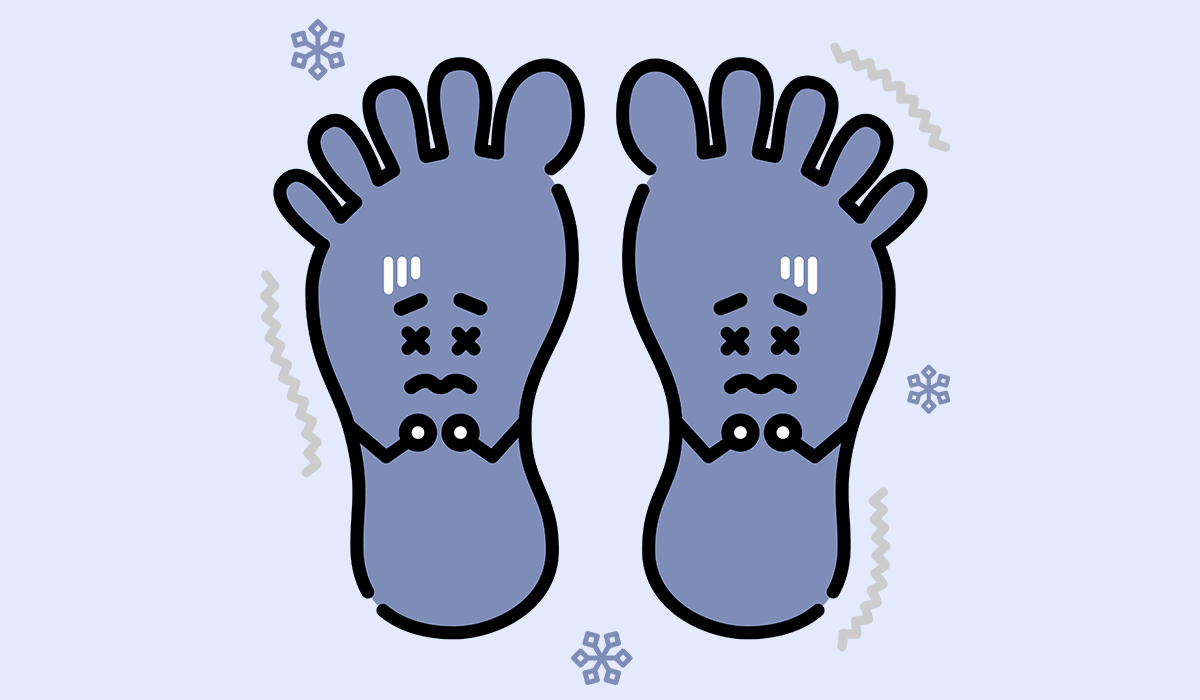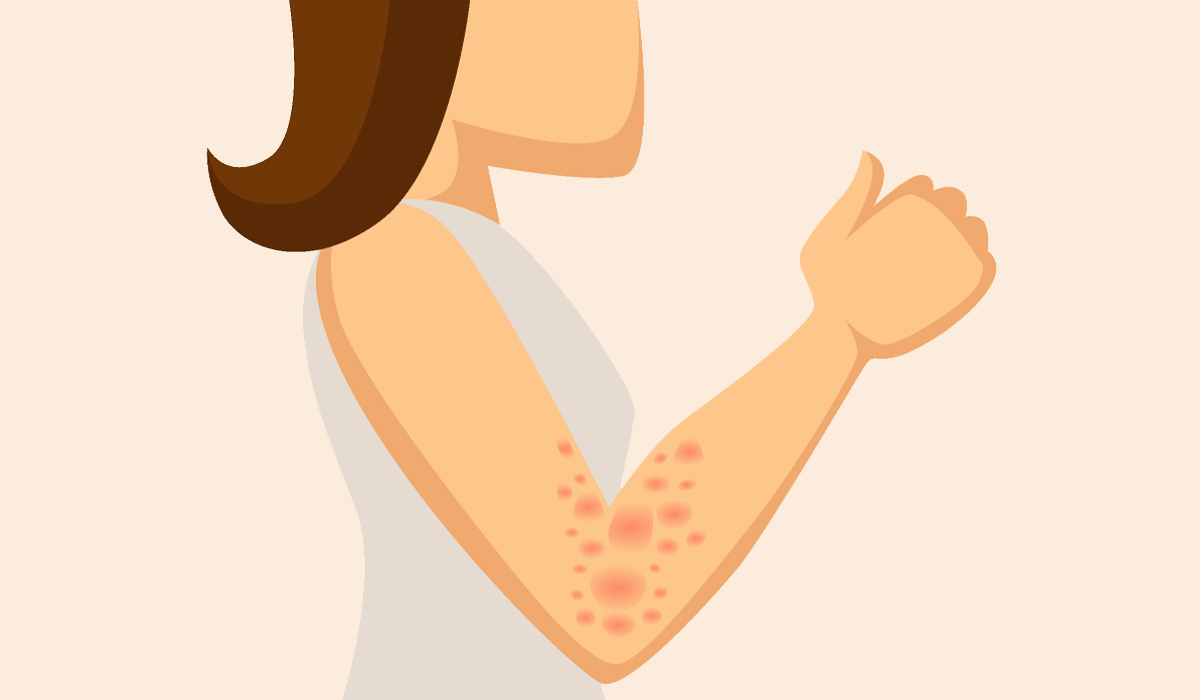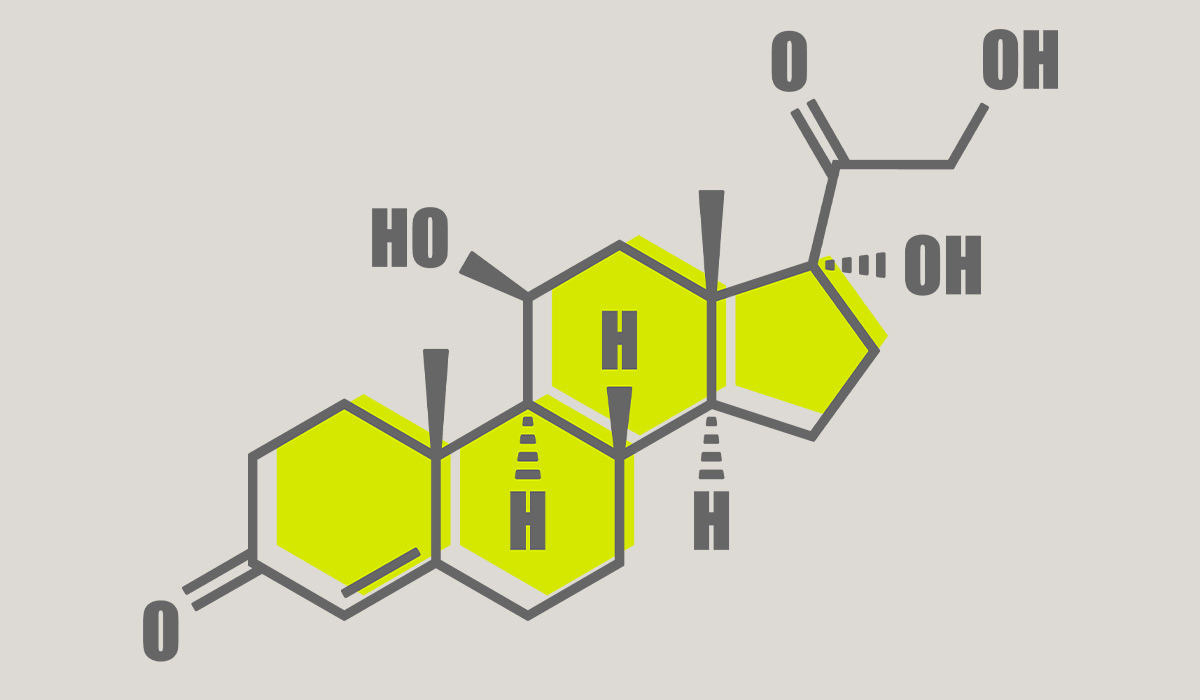Aside from foot swelling associated with injury and subsequent localized inflammation, foot swelling results in most cases from an imbalance between blood pressure in the veins of the lower extremities, total body fluid volume, volume of fluid transferred from vessels to tissues, and efficiency of the mechanisms that remove fluid back to the body to circulation.
The most important factors leading to leg swelling include:
- increased hydrostatic pressure in the venous system, which, in the face of the already high pressure at the level of the feet, ankles, and lower legs, significantly impedes blood flow, leads to its stagnation, and finally “pushes” the fluid from the blood vessels to the surrounding tissues;
- hindered return of fluid from tissues to the circulatory system through lymphatic vessels;
- reducing the so-called plasma oncotic pressure – caused by a decrease in plasma proteins, which facilitates the escape of fluid from the blood vessels into the tissues.
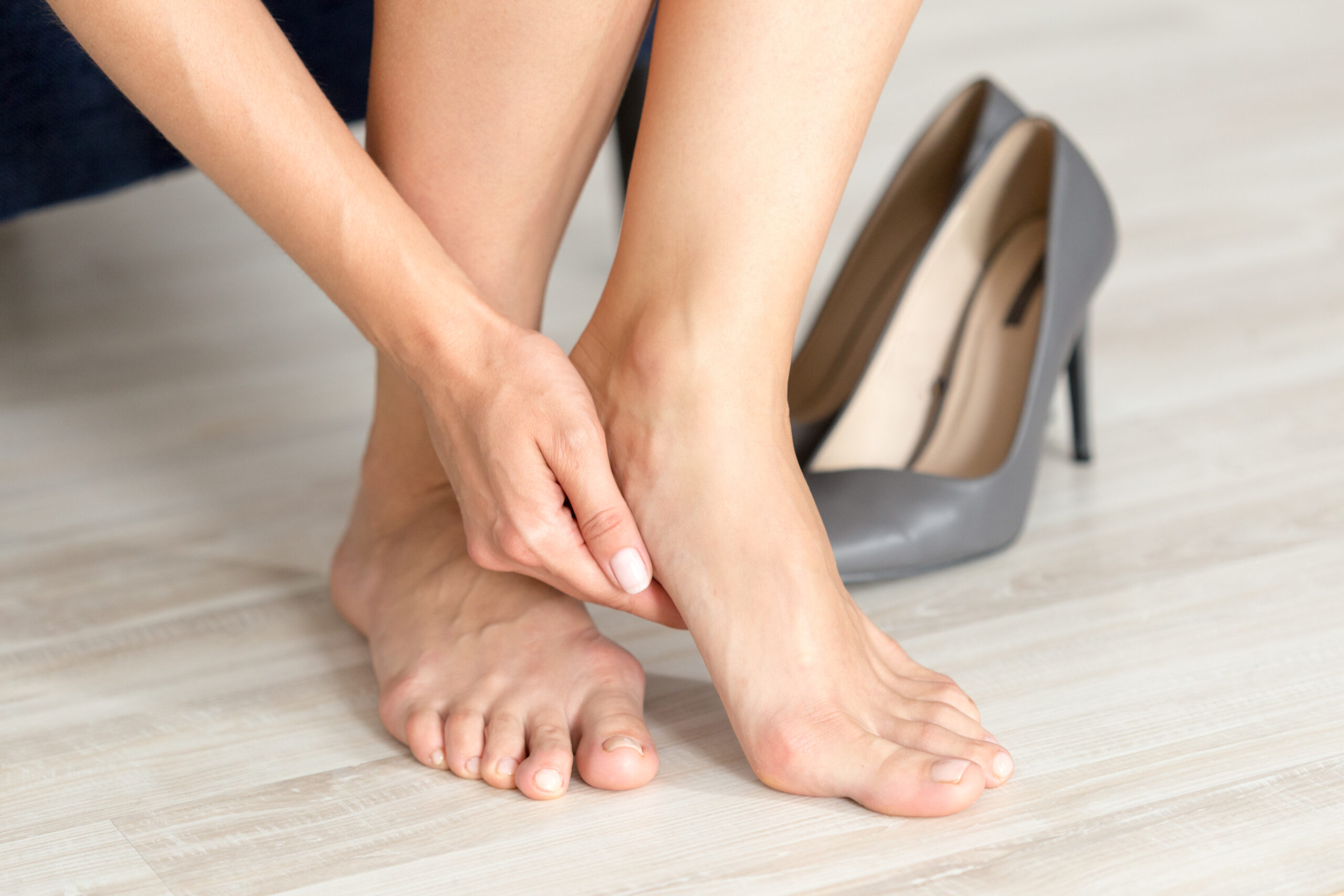
Separately or (more often) in combination, these factors lead to the seepage of fluid outside the blood vessels and its retention in the intercellular space, resulting in edema.
Swollen feet – causes of swollen feet
The most common causeof swollen feet (especially in people over 40 and 50) is chronic venous insufficiency.
In young women (before menopause) it is associated with the menstrual cycle, typically appearing before menstruation and disappearing after its onset.
Less common conditions with swelling of the feet and lower legs include:
- Heart failureand pulmonary hypertension – in both diseases, blood flow through the heart and pulmonary circulation is hindered, which leads to stagnation of blood in the venous system, including the veins of the legs;
- Side effects of drugs– especially drugs used to treat high blood pressure, non-steroidal anti-inflammatory drugs, steroids, and some hormonal drugs.
- Vein thrombosis of the lower limbs– usually causes rapidly developing leg swelling and pain.
- Lymphedema– swelling of the feet develops as a result of obstruction of the outflow of fluid from the tissues to the circulatory system through the lymphatic vessels. In the majority of cases, it develops as a result of compression or destruction of the lymphatic tracts, e.g., by a tumor in the pelvis, after surgical procedures complicated by lymphatic tract damage, or after irradiation of the pelvis with ionizing radiation.
- Pregnancy– compression of the inferior vena cava by the fetus can lead to obstruction of blood flow from the legs and their swelling.
- Chronic diseases of the kidneys and liver– lead to “overhydration” and a decrease in the oncotic pressure of the plasma by a decrease in the production of albumin. Swelling is visible all over the body – in addition to a swelling of the feet and legs, usually bilateral, you can also notice swelling on the face.
- Chronic venous insufficiency– blood stagnates in the veins, stretches them, and makes it difficult for them to work correctly. The symptoms are leg pain, the feeling of heaviness in the legs, edema – unilateral or symmetrical chronic swelling of the limbs, skin discoloration or ulceration, often accompanied by varicose dilatation of the veins.
What else can swollen feet mean?
The purpose of diagnosing swollen feet, as well as swollen ankles and lower legs, is to identify the underlying cause of the symptoms, exclude dangerous diseases that require rapid intervention, and enable the selection of effective treatment.
In the initial stage, it is necessary to take a thorough medical history and examinationto determine the characteristics of swelling of the legs and its type. The treatment depends primarily on whether the disease is present in both limbs or only in one and how quickly it developed (usually a period of less than and more than 72 hours is distinguished).
Rapidly developing swellingof one foot or more of one lower limb, especially if accompanied by pain, requires urgent exclusion of deep vein thrombosis of the lower limbs. Differentiation also includes bone injuries, bones, muscles, ligaments, tendons and joints, and cancers of the pelvic organs.
Chronic edema of one limb (lasting more than 72 hours) may be associated with the development of the so-called reflex sympathetic dystrophyor – quite rarely – compression of veins or lymph vesselsby pelvic organ cancer (rectum, ovaries, and others); less commonly, systemic diseases are the cause of unilateral edema.
In most cases, swelling of the legs for no apparent reason is caused by chronic venous insufficiency, so if the doctor does find its symptoms (swelled and heavy legs, cramps, varicose veins, spider veins, skin discoloration) – the specialist usually can make a diagnosis and start treatment. In the absence of clear signs of chronic venous insufficiency, it is advisable to search for other diseases(such as pulmonary hypertension, heart failure, liver, thyroid disease, or kidney failure).
Swollen feet – diagnosis
To diagnose, depending on the circumstances, the doctor may order laboratory and imaging tests. In the case of deep vein thrombosis, medical professionals usually perform a D-dimer test along with an ultrasound of the veins or other imaging tests.
When there is a suspicion of heart disease or pulmonary hypertension, conducting an ECG, echocardiography, and chest X-ray can be especially beneficial. Alternatively, if a pelvic tumor is suspected, a gynecological examination, digital rectal examination, and computed tomography of the pelvis are necessary.
Suspicion of a systemic disease is an indication to perform several laboratory tests to facilitate the diagnosis of the disease. The basic tests include complete blood count, urinalysis with urine sediment test, electrolyte concentration, creatinine level, blood glucose level, TSH level, and albumin level. Deviations in these parameters may correspond in particular to diseases of the liver and kidneys.
If the cause of foot swelling is obvious, the diagnosis is much simpler and usually does not require numerous tests.
A well-conducted diagnosis allows us to determine the cause of swellingof the legs and is a prerequisite for choosing the correct treatment.
What to do to avoid feet swelling?
First of all, the underlying medical problem must be treated. However, in some cases, it is enough to change lifestyle to cure or prevent swollen feet.
Take care of physical activities
The lack of movementcauses the weakening of blood and lymph circulation while exercising helps blood flow toward the heart and lymph nodes.
So make sure you take regular walks. Go cycling, swimming, or gym at least three times a week. If your job involves sitting for prolonged periods, it’s beneficial to take a break and move around the office or do basic exercises like flexing your leg muscles or moving your feet.
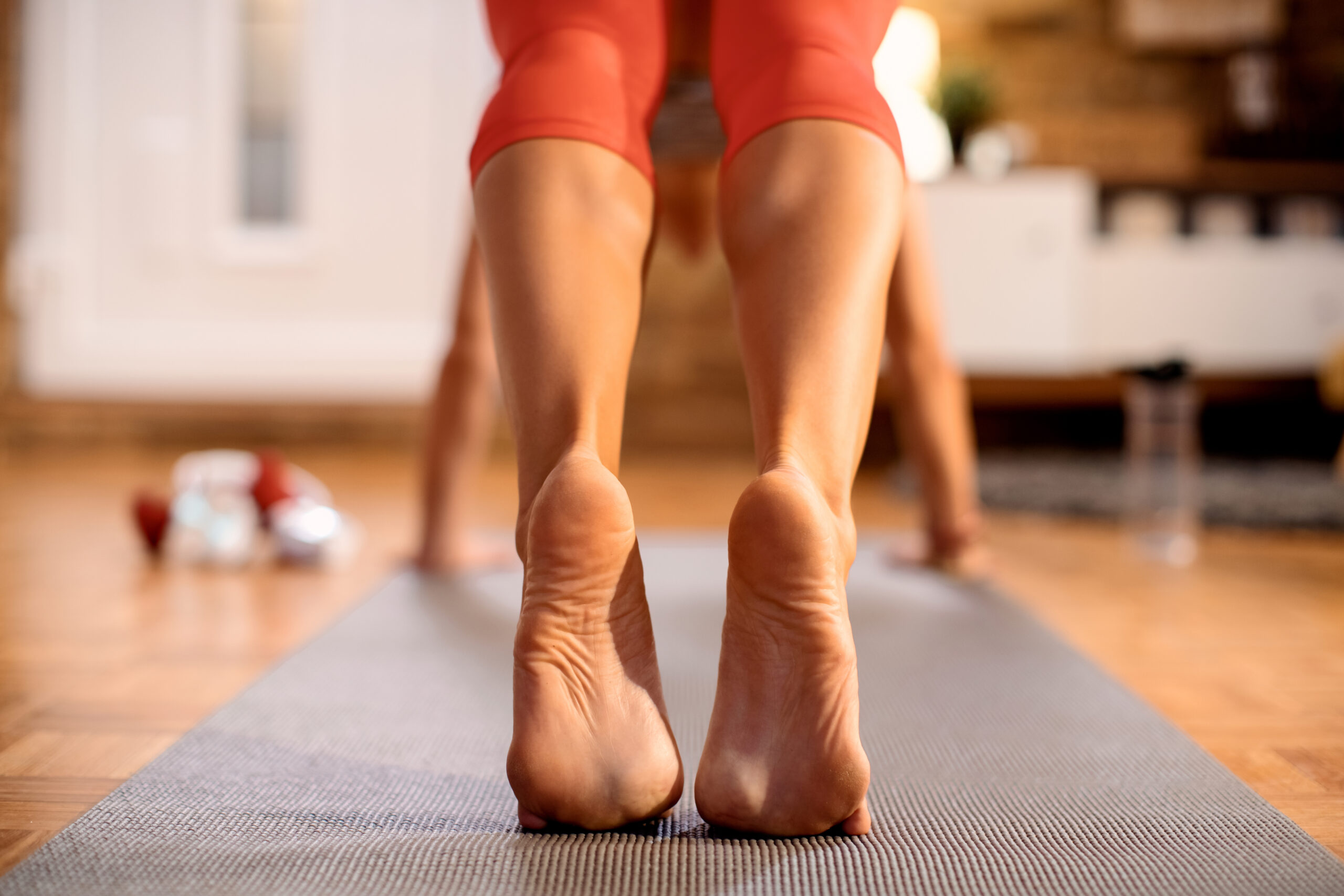
Remember about your diet
Sweets, ready-made cakes, fast food, packet dishes, and chips are best eliminated – they provide empty calories. The condition of the veins will be improved by a diet rich in vegetables and fruits, a minimum of 400-500 g per day. These products contain flavonoids, polyphenols, folates, carotenoids, as well as vitamin E and vitamin C and rutin – substances of plant origin that inhibit atherosclerotic processes, seal and strengthen blood vessels, prevent capillary rupture, and have antithrombotic properties.
Excessive consumption of salt, hot spices, products with flavor enhancers, and processed products can cause swelling. Salt contains sodium, which retains water in the body and raises blood pressure. Remember that salt is present in most products, so read the labels before buying them.
Sugar also hinders fluid excretion by raising insulin levels, which in turn limits the body’s ability to get rid of sodium and therefore water. Thus, you should be careful not only with sweetening coffee or tea but also with eating sweets.
It is worth including plants with a diuretic effect in the diet. Diuretics signal the kidneys to excrete sodium and consequently residual fluids from the body. They are in many fruits and vegetables, including citrus, cucumbers, tomatoes, peppers, soybeans, celery, carrots, and onions.
In addition, your diet should be rich in products containing potassium, because it positively affects water management and supports the work of muscles. Look for potassium in tomatoes, bananas, potatoes, legumes, nuts, sunflower seeds, and citrus fruits.
It is also significant to supplement the diet with products containing rutin and silicon, as they strengthen blood vessels.
Fatty meats and butter should be limited, enriching the diet with sea fish, nuts, and oils rich in unsaturated fatty acids.
The dose of fiber (whole grain products, groats, vegetables, and fruits) is significant, which will help regulate bowel movements. Such a diet strengthens the veins and helps to maintain a slim figure.
Water for swelling
It is also significant to drink adequate amounts of water. Remember to drink approximately 2 liters of still water throughout the day. Do not replace it with cola, sweetened sodas, or coffee.
When the body is even slightly dehydrated, it defends itself by retaining water – and because of the retained water our bodies seem swollen, and we gain extra kilos a day without any rational reason.
When you wake up in the morning with puffy eyes, wash your face with cold water. It may not be a gentle awakening but it will result in narrowed blood vessels and reduced swelling.
Gels and other preparations
They can be used independently of oral medications. The effect of their use is almost immediate. They have the form of easily absorbed light gels or sprays.
They usually contain the same active substances as oral drugs: horse chestnut extracts, diosmin, hesperidin, and rutin, which have anti-edematous and vascular-strengthening effects, and sometimes mountain arnica extract, which improves microcirculation. Some preparations contain heparin, a significant anticoagulant and anti-inflammatory ingredient that cannot be administered orally. The addition of menthol pleasantly cools and has an analgesic effect.
Some gels have a liposomal structure, which means that the carrier of the active substances is microparticles called liposomes, which facilitate the penetration of these substances into the skin. Liposomes additionally care for tense skin, moisturizing it.
Gels and sprays should be used according to the instructions in the leaflet – depending on the preparation, from 1 to 4 times a day. When applying the gel, it is worth massaging the calves at the same time – from the ankles towards the knees. This massage helps the blood flow toward the heart and prevents painful contractions.
Remedies for swollen legs – treat them with tenderness
If you have to stand for a long time, don’t freeze. Stepping in place, bending your knees, or standing on your toes helps blood flow through your veins.
Avoid tight clothing, e.g., tights, socks, and uncomfortable high-heeled shoes. Wear anti-edematous or relaxing tights. They are in the pharmacy or good hosiery stores.
Come up the stairs. This exercise improves the muscle pump. Walk on uneven terrain as much as possible to keep your veins flexible.
Massage your feet. For example, on wooden rollers with spikes, walk barefoot on a special mat, the so-called hedgehog.

After coming home for 15 – 20 minutes, wrap your ankles in a bandage that has been soaked and cooled in the refrigerator. Then, for 10 minutes, put your legs higher than the rest of your body.
Bathe your feet in lukewarm water. Lavender or tea oil will remove the unpleasant smell of sweat, rosemary will eliminate pain and refresh the skin, chamomile will remove irritation, and salt will improve blood circulation.
Rest, lying on your left side – then the blood circulates freely. Put your legs up high whenever you can. And at night, put a pillow under your calves.
Use acid baths. Squeeze lemon juice into lukewarm water – it will shrink capillaries, and allow blood to circulate faster, thanks to which veins will be in better condition.
Avoid saunas and hot depilatory waxes, especially if your legs swell frequently. Avoid anti-cellulite creams as they have warming properties.
Lose excess weight, regulate your bowel movements, and avoid gas-inducing foods. Consult your doctor about the use of laxatives and diuretics. Quit or reduce smoking.
Use preparations to seal blood vessels as well as gels and creams to protect against swelling. Drink an infusion of birch leaves that has an anti-swelling effect.
Sources
- Causes and signs of edema. NIH. https://www.ncbi.nlm.nih.gov/books/NBK279409/.
- Characterization of symptoms and edema distribution in premenstrual syndrome. NIH. https://www.ncbi.nlm.nih.gov/pmc/articles/PMC4362892/.
- When Body Parts Swell. NIH. https://newsinhealth.nih.gov/2022/07/when-body-parts-swell.
- Swollen lower limb. NIH. https://www.ncbi.nlm.nih.gov/pmc/articles/PMC1071280/.
- Lymphedema. NIH. https://www.ncbi.nlm.nih.gov/books/NBK537239/.
- Edema in pregnancy. NIH. https://pubmed.ncbi.nlm.nih.gov/9185112/.
- Thyroid dermopathy: an underrecognized cause of leg edema. NIH. https://pubmed.ncbi.nlm.nih.gov/17674588/.
- Peripheral Edema. NIH. https://www.ncbi.nlm.nih.gov/books/NBK554452/.
- Severe complications of reflex sympathetic dystrophy: infection, ulcers, chronic edema, dystonia, and myoclonus. NIH. https://pubmed.ncbi.nlm.nih.gov/9552109/.
- The effects of gravity and compression on interstitial fluid transport in the lower limb. NIH. https://www.ncbi.nlm.nih.gov/pmc/articles/PMC8941011/.
- Physiology, Edema. NIH. https://www.ncbi.nlm.nih.gov/books/NBK537065/.
- Focus on Your Feet!. NIH. https://newsinhealth.nih.gov/2023/03/focus-your-feet.
- Management of Edema. NIH. https://www.ncbi.nlm.nih.gov/pmc/articles/PMC5300735/.
- Diagnostic approach to lower limb edema. NIH. https://www.ncbi.nlm.nih.gov/pmc/articles/PMC7536506/#sec4-0268355520938283title.
- Reduction of Pain and Edema of the Legs by Walking Wearing Elastic Stockings. NIH. https://www.ncbi.nlm.nih.gov/pmc/articles/PMC4561105/.
- Peripheral edema: A common and persistent health problem for older Americans. NIH. https://www.ncbi.nlm.nih.gov/pmc/articles/PMC8675752/.
- Water, Hydration and Health. NIH. https://www.ncbi.nlm.nih.gov/pmc/articles/PMC2908954/.
- Swollen ankles, feet and legs (oedema). NHS. https://www.nhs.uk/conditions/oedema/.
